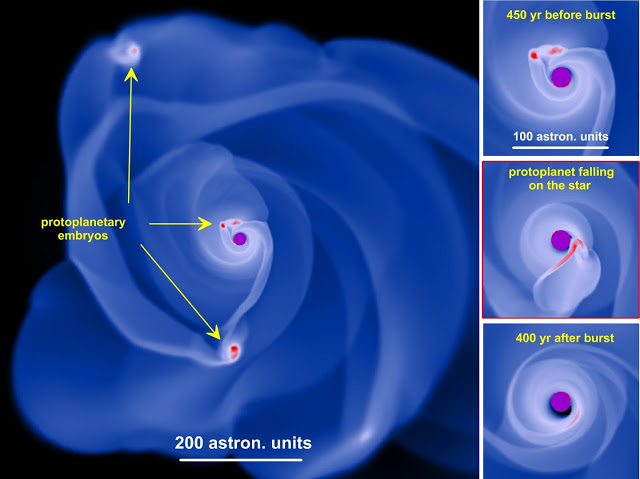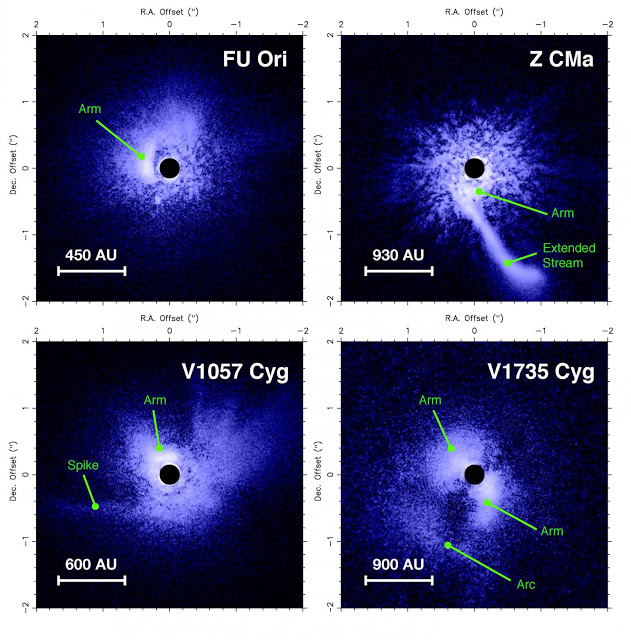

| Online: | |
| Visits: | |
| Stories: |

| Story Views | |
| Now: | |
| Last Hour: | |
| Last 24 Hours: | |
| Total: | |
‘Cannibalism’ Between Stars: New Research Shows the Turbulent Past of Our Sun
This is a Simulation of a gravitationally unstable circumstellar disk by means of hydrodynamic calculations. Protoplanetary ‘embryo’ form in the disc thanks to gravitational fragmentation. The three small pictures show the successive ‘disappearance’ of the lump by the star.

Credit: Copyright: Eduard Vorobyov, Universität Wien
One possible mechanism that can explain these brightening events was put forward 10 years ago by Eduard Vorobyov, now working at the Astrophysical Department of the Vienna University, in collaboration with Shantanu Basu from the University of Western Ontario, Canada.
According to their theory, stellar brightening can be caused by fragmentation due to gravitational instabilities in massive gaseous disks surrounding young stars, followed by migration of dense gaseous clumps onto the star. Like the process of throwing logs into a fireplace, these episodes of clump consumption release excess energy which causes the young star to brighten by a factor of hundreds to thousands. During each episode, the star is consuming the equivalent of one Earth mass every ten days. After this, it may take another several thousand years before another event occurs.
Eduard Vorobyov describes the process of clump formation in circumstellar disks followed by their migration onto the star as “cannibalism on astronomical scales”. These clumps could have matured into giant planets such as Jupiter, but instead they were swallowed by the parental star. This invokes an interesting analogy with the Greek mythology, wherein Cronus, the leader of the first generation of Titans, ate up his newborn children (though failing to gobble up Zeus, who finally brought death upon his father).
These are the polarized intensities of four selected FU Orionis objects observed with the 8.2-meter Subaru Telescope. Significant asymmetries, such as elbows, arms and broad trends — typical of gravitationally unstable disks — are indicated by arrows.

Credit: Copyright: Eduard Vorobyov, Universität Wien
“This is a major step towards our understanding of how stars and planets form and evolve”, says Vorobyov, “If we can prove that most stars undergo such episodes of brightening caused by disk gravitational instability, this would mean that our own Sun might have experienced several such episodes, implying that the giant planets of the Solar system may in fact be lucky survivors of the Sun’s tempestuous past”.
Contacts and sources:
Source:


